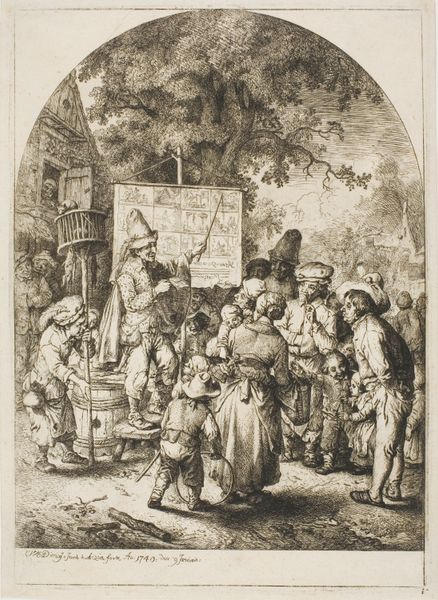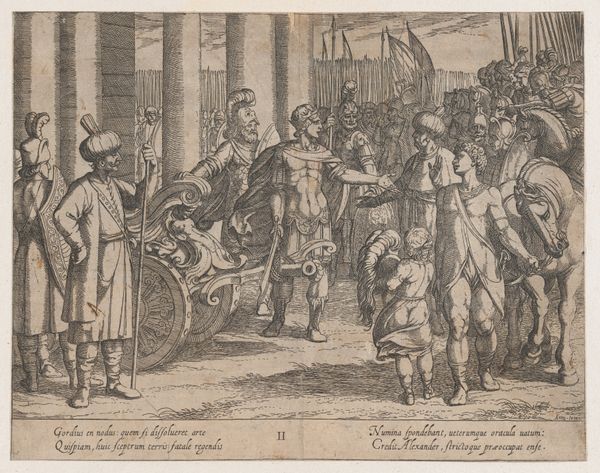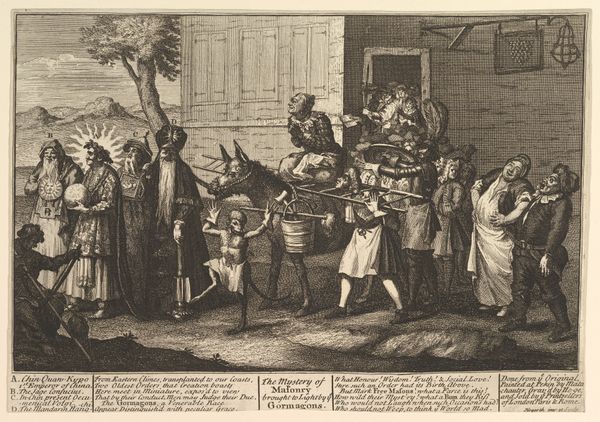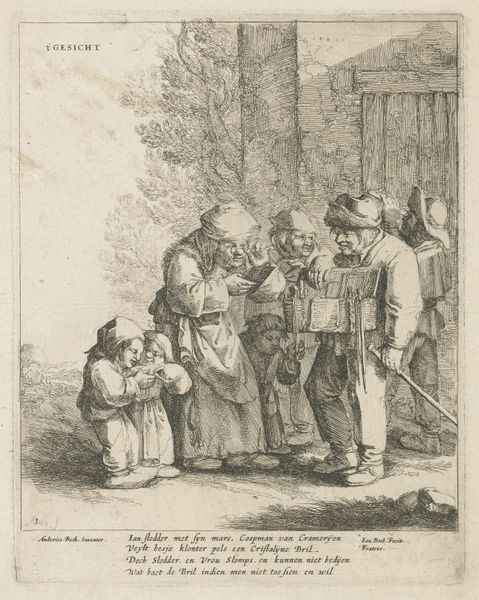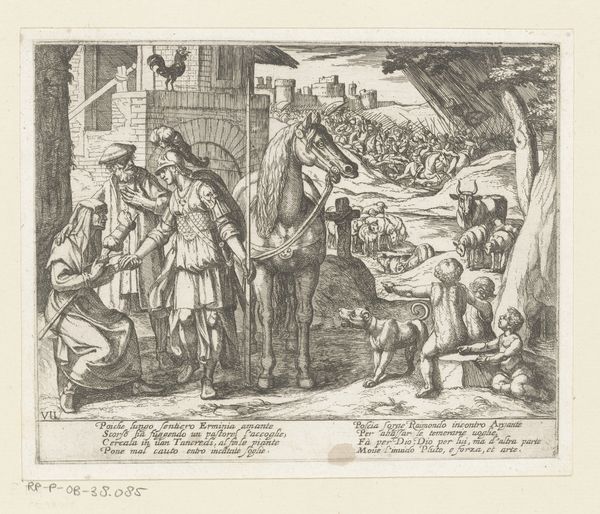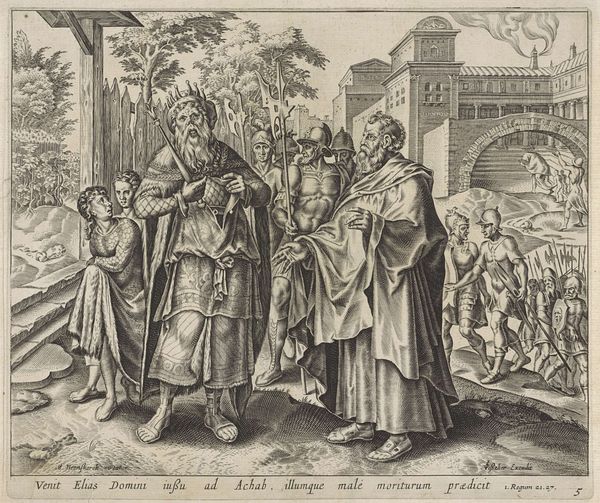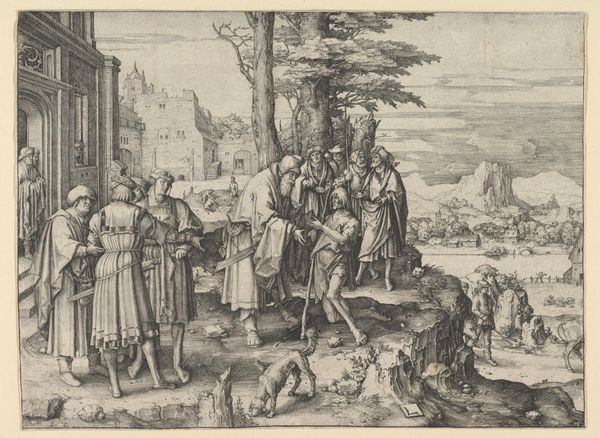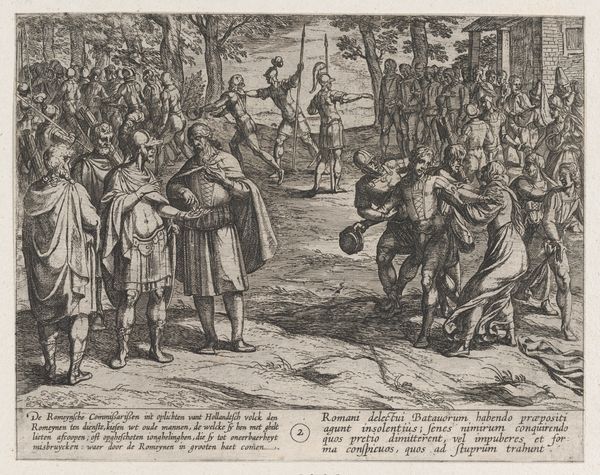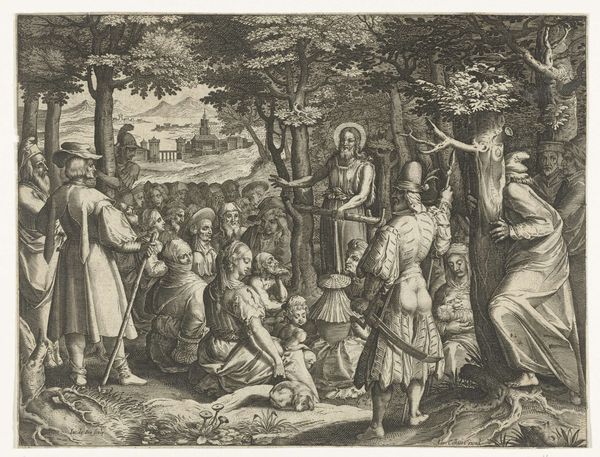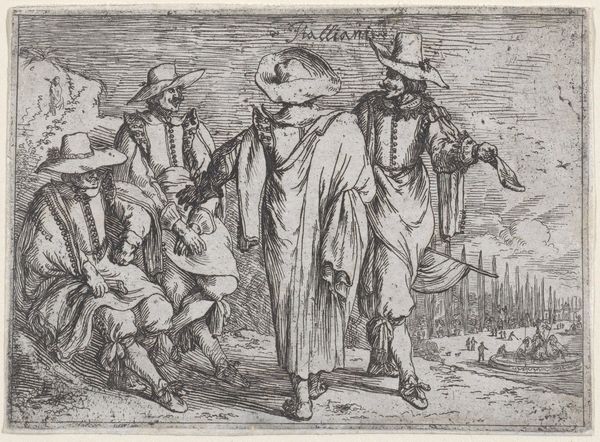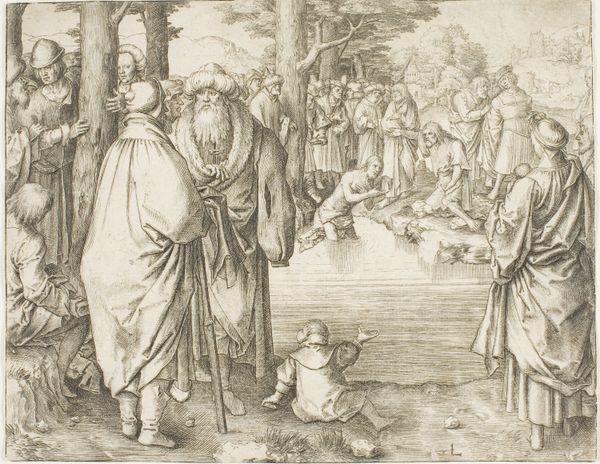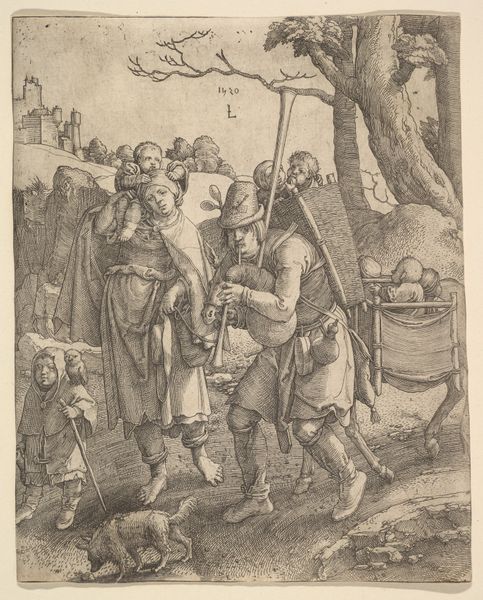
print, engraving
#
narrative-art
# print
#
genre-painting
#
northern-renaissance
#
engraving
Dimensions: sheet (trimmed to plate mark): 17.1 x 22.7 cm (6 3/4 x 8 15/16 in.)
Copyright: National Gallery of Art: CC0 1.0
Curator: Before us, we have "Procession of Feasting Lepers," an engraving by Claes Jansz. Visscher from 1608. It's a remarkable piece of narrative art reflecting genre-painting conventions of the Northern Renaissance. Editor: My immediate reaction is one of unsettling contrast. The figures are clustered so closely, yet their expressions are difficult to decipher. The overall composition, rendered with precise lines, has this peculiar tension. Curator: Absolutely. It's vital to consider the context. Leper processions were a social reality, reflecting marginalization and complex interactions between the diseased and the healthy. The artwork provides visual commentary on societal responses, power dynamics, and the place of those ostracized within the community. Editor: Focusing on the visual elements, there's a strange spatial ambiguity. The characters almost appear to be crammed in a shallow stage, each carefully placed in order to be perceived despite their physical limitations and proximity to each other. The density certainly adds to the feeling of unease. Curator: Yes, and that density emphasizes the shared experience—a kind of imposed togetherness. Leprosy carried immense stigma, impacting all aspects of life. By depicting this gathering, Visscher invites the viewer to confront these social taboos and empathize, to some extent, with those on the fringes. Note too the ambiguous, yet potentially celebratory aspect to this ‘feast’. Editor: It’s the treatment of light and shadow that strikes me too, it's very strategic. Certain faces and figures are highlighted, creating mini-narratives within the larger procession. It creates a visual hierarchy, of sorts, leading our eye to specific moments or interactions. The texture created, even in engraving, feels tactile, bringing to life the varying textures of cloth and skin. Curator: Precisely. Visscher isn’t merely documenting; he's prompting critical engagement with societal prejudices. He underscores not only the physical suffering, but also the performative aspect of this ‘procession’. By viewing them, these figures are implicitly recognized but not quite integrated. The gaze is forever liminal. Editor: Indeed. In studying this image through careful analysis of line, tone, and texture we appreciate the artist's careful handling of mood, spatial compression and detail in order to render a compelling representation of suffering and exclusion. Curator: And when examining this historical moment we glean some insights into enduring questions about humanity, illness, and how society creates divisions. A profoundly relevant exploration, still.
Comments
No comments
Be the first to comment and join the conversation on the ultimate creative platform.

